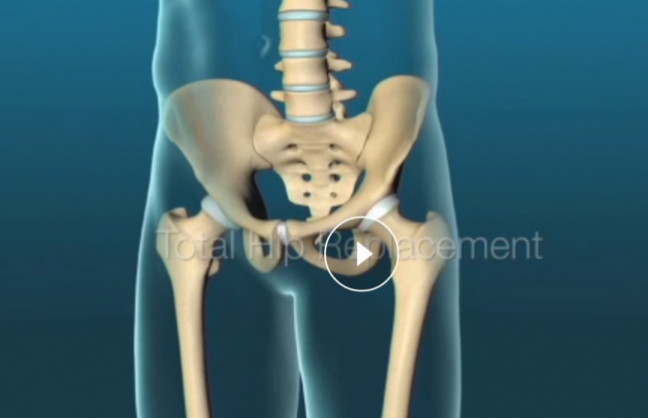- Hip replacement surgery is carried out if pain from severe arthritis or another injury to your hip stops you from doing your day-to-day activities, and there are clear changes to the joint that surgery will correct.
- It is only offered when other treatments such as physiotherapy and occupational therapy haven’t helped with pain and mobility.
- People who actively participate in their care before and after surgery are likely to have a better recovery.
- There are many things you can do to take part in your care, starting from before your operation, during your stay in hospital and when you get home after discharge.
- You can improve the outcome of your surgery by getting yourself as fit and healthy as possible beforehand. This may include stopping smoking, exercising, eating a balanced diet and limiting or avoiding alcohol.
- If you are overweight, weight loss is especially helpful and may mean you no longer need surgery.
Low or no data? Visit zero.govt.nz, scroll down the page then click on our logo to return to our site and browse for free.
Hip replacement surgery | Pokanga hope
Key points about hip replacement surgery
- Hip replacement surgery (pokanga hope) involves removing damaged parts of your hip and replacing them with new parts made of metal and plastic.
- It's carried out when severe pain is stopping you doing your daily activities and it's clear that surgery will help.
- It's only offered when things like physiotherapy and lifestyle changes haven't helped with your pain and mobility.
- You can improve the outcome by getting as healthy as possible (exercise, healthy eating, limit alcohol, stop smoking) before your surgery.

A total hip joint replacement is an operation to replace a damaged or diseased hip joint. Your hip joint is made up of the head of the femur (ball) and the acetabulum (socket). In the majority of hip replacements, both the ball and the socket are replaced with metal and plastic components.
 (external link)
(external link)
(WebMD, US, 2019)
Hip replacement surgery is usually only offered when alternatives to it have not worked for you. These include regular exercise, losing weight, physiotherapy or occupational therapy, and pain relief medicines.
Learn more about the alternatives to hip replacement surgery.
Hip replacement surgery is usually recommended if you have severe arthritis of your hip that causes disabling pain and when other treatments, such as physiotherapy haven't helped reduce pain or improve mobility. The most common reason a hip needs replacing is osteoarthritis of the hip. You may be offered hip replacement surgery if:
- you have severe pain, swelling and stiffness in your hip and your mobility is reduced
- your pain is so severe that it interferes with your quality of life and sleep
- everyday tasks, such as shopping or getting out of the bath, are difficult or impossible
- you're feeling depressed because of the pain and lack of mobility
- you can't work or have a normal social life.
You'll also need to be well enough to cope with both a major operation and the rehabilitation afterwards.
To decide whether a hip replacement is right for you, talk with your doctor about the risks and benefits of the surgery. Also, find out what you can do if you choose not to have surgery. The following summary is a guide.
What are the benefits of having hip surgery?
The aim of hip surgery is to relieve pain, reduce stiffness and improve your ability to walk. Over 90% of people experience dramatic pain relief and improved hip function with a new joint and more than 90% of hip replacements last beyond 10 years.
Are there any risks to having hip surgery?
As with all surgeries, complications sometimes occur with hip replacement surgery. Smoking, obesity or some illnesses may increase your chance of complications. Complications include the possibility of blood clots or deep venous thrombosis (DVT) of the veins in your legs or pelvis, bleeding, infection, one leg being longer than the other, damage to arteries and nerves in your leg and bone fracture during or after the operation. Though uncommon, when these occur they may delay or limit your full recovery.
This series of videos provides an overview of preparing for, undergoing and recovering from hip replacement surgery. The first one is provided below.
Video: Your guide to hip replacement surgery - 01 - Welcome
This video may take a few moments to load.
(Ministry of Health, NZ, 2015)
You can watch the other videos in the series by clicking on the following link. It gives you the option to choose which one to watch, or to play them all.
Your guide to hip replacement: Recover faster, return home sooner.(external link)
Many district health boards (DHBs) have introduced a new way of caring for people who need a hip or knee joint replacement. This is called ERAS – Enhanced Recovery After Surgery. The ERAS pathway of care starts when you and your doctor decide that you need surgery and continues through to your rehabilitation at home or in the community. The approach covers a number of evidence-based interventions that aim to ensure you:
- are in the best possible condition for surgery
- have the best possible management during and after your surgery
- participate in the best possible rehabilitation after surgery.
You are encouraged to be a partner in your own care. The sooner you get out of bed and begin to walk, eat and drink after your operation, the quicker and more comfortable your recovery will be. You return home earlier to your normal life, work and play. All going well, you are likely to return home after 2 to 4 nights in hospital. Read more about ERAS(external link).
Research has shown that people who actively participate in their own care before and after surgery are likely to have a better recovery. There are many things you can do to take part in your care, starting from before your operation, during your stay in hospital and when you get home after discharge. Your ERAS booklet(external link) will give you more details but here is a summary of what to expect and the sorts of things you can do.
| Hip surgery | What to expect and things you can do |
| Before your surgery | What to expect
Things you can do
|
| While in hospital | What to expect
|
| Discharge | What to expect
|
Enhanced Recovery After Surgery (ERAS) – Hip replacement - a guide for patients(external link) Canterbury DHB, NZ, 2020
Total knee replacement - patient information(external link) Capital & Coast DHB, NZ, 2020
Joint replacement surgery – a patient's guide(external link) Family Doctor, NZ
How long does a hip replacement last? A systematic review and meta-analysis of case series and national registry reports with more than 15 years of follow-up(external link) The Lancet, 2019;393(101720):647-654
Resources
Hip replacement – a guide for patients(external link) ERAS and Canterbury DHB, NZ, 2020
Hip conditioning programme(external link) American Academy of Orthopaedic Surgeons, USA
References
- How long does a hip replacement last? A systematic review and meta-analysis of case series and national registry reports with more than 15 years of follow-up(external link) The Lancet, Volume 393, Issue 10172, 16–22 February 2019, Pages 647-654
Credits: Healthify editorial team. Healthify is brought to you by Health Navigator Charitable Trust.
Reviewed by: Dr Bronwyn Lennox Thompson, senior lecturer, Orthopaediac Surgery & Musculoskeletal Medicine, University of Otago, Christchurch
Last reviewed:
Page last updated:





